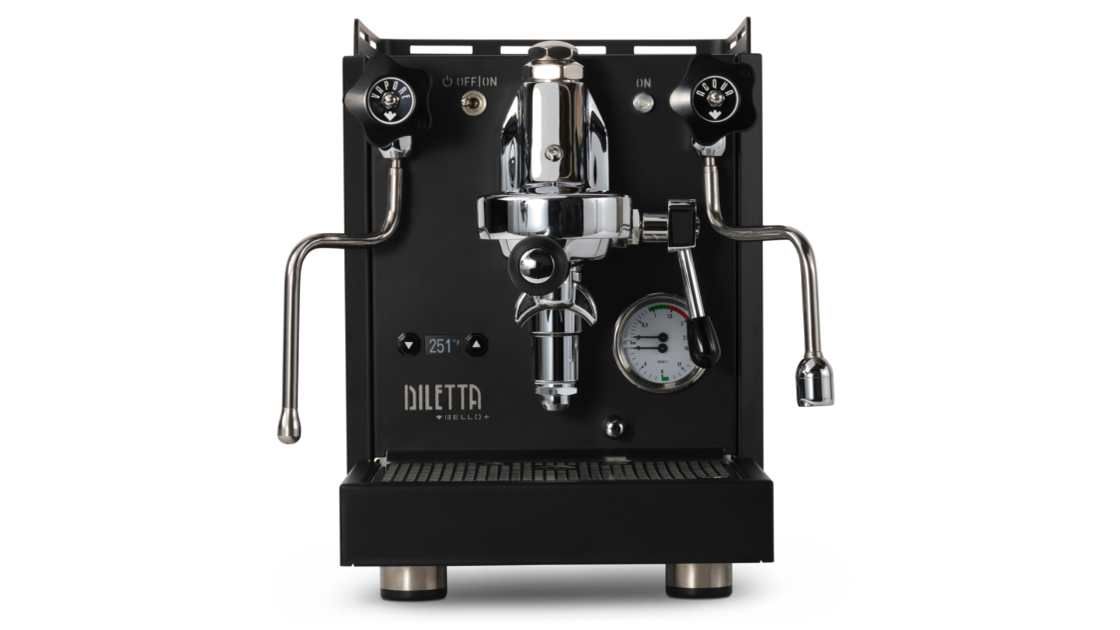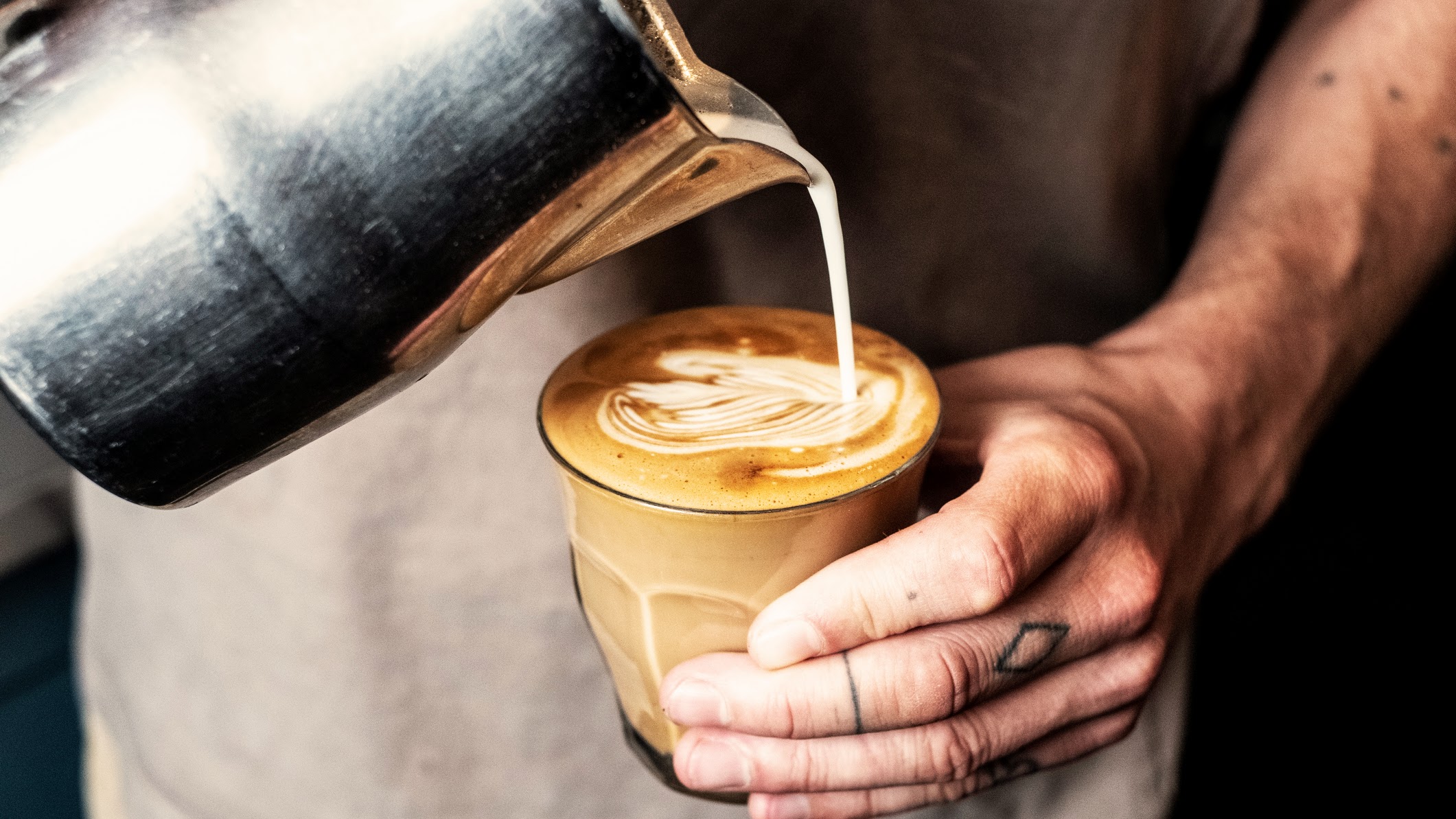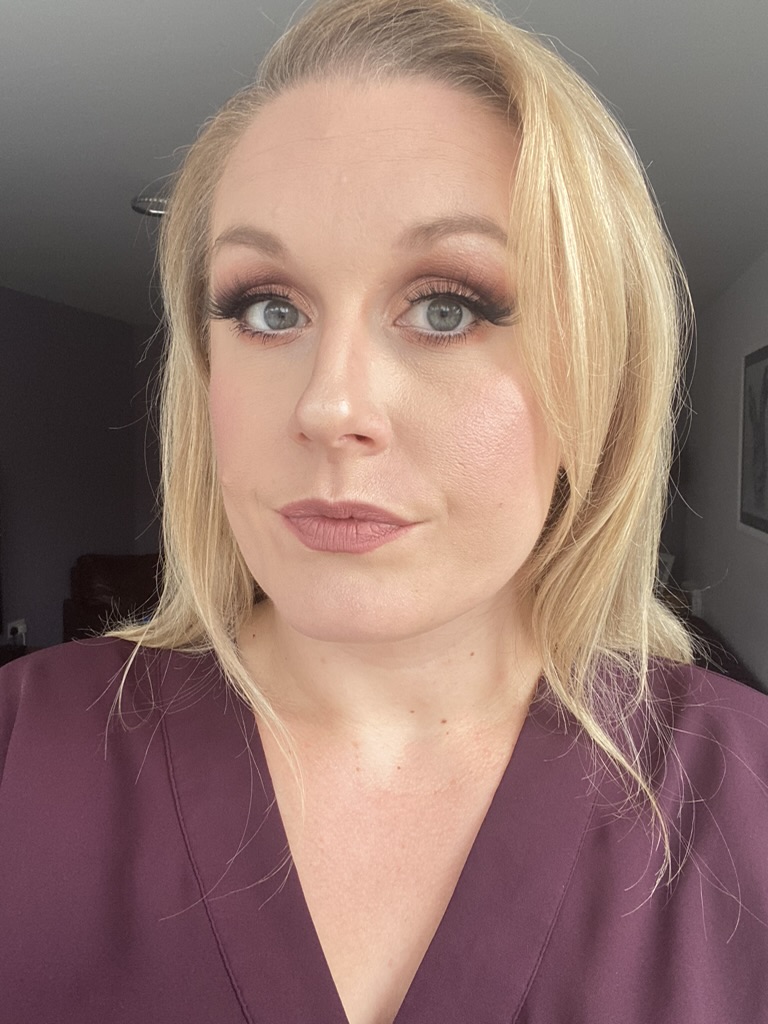Drip coffee vs espresso: which coffee brewing method is best?
Not all coffee brewing methods are created equal

Water Capacity: 42 fl oz
Grind size: Medium/Coarse
Brew time: 4-6 minutes
The Moccamaster KBGV Select is a premium drip coffee machine designed to be simple yet highly effective. It uses medium/coarse grounds and a filter to create foolproof jugs of coffee with minimal effort. It costs more than your average drip coffee machine because of its precise heating element and an engineered showerhead that ensures water is evenly distributed. It's ideal for people with a straightforward, no-nonsense approach to their daily coffee ritual.
Pros
- Easy to use
- Consistent performance
Cons
- Limited features

Water Capacity: 67.5 fl oz
Grind size: Fine
Brew time: 25-30 seconds
The Seattle Coffee Diletta Bello+ Espresso Machine is designed for coffee aficionados who enjoy making coffee as much as drinking it. It offers a much higher level of control and customization than the Moccamaster but has a steep learning curve. It comes with components like a steam wand, porta-filter, and high-pressure pump and is ideal for people willing to invest time and effort into crafting the perfect cup of joe.
Pros
- High level of customization
- Versatile
Cons
- Steep learning curve
- High price point
Fans of coffee will tell you that it's much more than just a drink; it's a daily ritual. Even if you don't know your Ethiopian blend from your Columbian bean, chances are you'll know what you like and don't when making your perfect cup of joe.
It's why the coffee machine market is so huge and why choosing one of the best coffee makers can be so hard. To help simplify things, this feature compares two of the most popular methods – drip coffee machines, like the Moccamaster KBGV Select, and espresso machines, like the Seattle Coffee Dilleta Bello+.
While both types of coffee makers serve the same fundamental purpose – brewing coffee from grounds – they do so in ways that result in distinct flavors, aromas, and experiences.
Drip coffee machines are renowned for their simplicity and consistency, offering a straightforward way to make a large jug of coffee like those seen in offices and diners. Espresso machines are better known for their quick, one-time, concentrated espressos, which can be used to make a wide range of coffee-based drinks, from lattes to cappuccinos. The best espresso machines are usually found in coffeehouses like Starbucks.
But how do the two coffee makers differ in design, features, performance, and taste? Which one is better suited to you and your coffee needs? Keep reading our drip coffee vs espresso guide to find out.
Drip coffee vs espresso: Design
With drip coffee machines, hot water is automatically poured over coffee grounds inside a filter, usually at the press of a button or a flick of a switch. This causes drops of filtered coffee to drip through to a jug positioned on a heated plate below.
Not to be confused with pour-over coffee brewers, in which the hot water is manually poured over the grounds, drip coffee machines typically feature a water tank connected to a "showerhead," which sprays water into the filter positioned above the jug. They're often seen as the epitome of functional design because they have few bells and whistles.
Sign up to receive the latest news, reviews, buying guides and deals direct to your inbox
They are straightforward, easy to use, and are built to deliver a consistent cup of coffee every time. The Moccamaster, for example, is built with a combination of metal and plastic, offering durability while keeping the machine lightweight. The design elements are minimalistic, with a water reservoir, a heating element, and a drip area that allows water to flow over the coffee grounds. Drip coffee machines are often compact, too, designed to fit comfortably on a kitchen counter without taking up too much space.
Espresso machines, such as the Seattle Coffee machine, are different. They are typically much larger, often made of stainless steel, and come with more complex parts like a steam wand, portafilter, and high-pressure pump. They're designed to stand out and have dials and gauges, or even touch displays, that not only add to the aesthetic but also give real-time feedback during the brewing process.
If you buy a bean-to-cup model, it will also have a built-in grinder and a tamping area. Every component on an espresso machine has been precisely engineered to work together and offer as much control as possible. This makes it much harder to use than a drip coffee machine, which is more expensive but much more versatile.
- Verdict: If you're looking for a machine that offers simplicity and ease of use, a drip coffee machine like the Moccamaster is your best bet. It's straightforward, functional, and does its job well. However, if you see coffee-making as more of an art form and are willing to invest time and effort into crafting the perfect cup, an espresso machine would suit you better. It offers a level of control and customization that drip machines simply can't match.
Drip coffee vs espresso: Features
Regarding features, drip coffee machines offer a more streamlined experience. They usually come with a timer, allowing you to set your coffee to brew at a specific time, and some models offer brew-strength settings that alter the amount of water administered.
Their sole focus is delivering a consistent cup of coffee with minimal fuss. They don't offer many features, and the main areas to assess when buying a drip coffee machine (other than its size and colors) are the heating elements used to brew the water and its showerhead, which determines how evenly the water is distributed over the grounds.
Again, espresso machines are a different story. They are full of features offering a level of customization that can be both exciting and overwhelming. The Seattle Coffee Machine, for instance, allows you to control everything from the grind size of your coffee to the brewing temperature and pressure. Tweaking each of these settings directly impacts the taste, strength, and consistency of your espresso. If you change beans, you may have to experiment and constantly alter these settings to your liking.
Some models offer pre-set programs for different types of drinks, from a simple espresso to a more complex macchiato. Espresso machines also often include hot water and steam wands, allowing you to froth milk for lattes and cappuccinos.
- Verdict: If you want a simple, no-fuss coffee-making experience and like coffee pretty much as it comes, a drip coffee machine is ideal. It offers fewer features but excels in the ones it does offer. On the other hand, if you're a coffee enthusiast looking for a machine that allows you to experiment and fine-tune your brew and you have very particular coffee tastes, then an espresso machine is the way to go.

Drip coffee vs espresso: Performance & Taste
Drip coffee machines are often praised for their consistency. They are designed to make a good cup of coffee every time, with little room for error. The Moccamaster, for example, has a metal coffee filter and a precise heating element that ensures your coffee is brewed at the optimal temperature each time. The result is usually a smooth, mild, well-balanced cup of coffee that many find perfect for daily drinking.
The brewing process allows for a balanced and slower extraction of oils and aromatics from the coffee grounds, resulting in a less intense cup than espresso but still rich in flavor. The taste can vary depending on the coffee-to-water ratio and grind size, but drip coffee is generally less acidic and milder than espresso.
Espresso machines are, instead, about versatility and quality. They are designed to quickly extract every ounce of flavor from your coffee grounds, resulting in a rich, full-bodied cup of coffee. High-pressure forces hot water through the coffee grounds, extracting a "shot" of coffee. This extraction process brings out the complexities of the coffee, including its acidity, sweetness, and nuanced aromatics. Espresso machines then let you set the temperature and texture of the milk you choose, allowing you to make various coffee drinks from a single machine.
However, this performance comes at a cost. Espresso machines have a steeper learning curve and require a more hands-on approach. You'll need to learn how to grind your coffee, tamp it correctly, and brew it at the right temperature and pressure. It's a more involved process that many coffee enthusiasts find rewarding.
- Verdict: Regarding performance, both drip coffee machines and espresso machines have unique strengths and weaknesses, especially in terms of taste. If you prefer a consistent, balanced cup of coffee, a drip coffee machine may be your better option. If you instead enjoy the intricacies of flavor and don't mind putting in the effort for a perfect cup, an espresso machine is likely the better choice.
Drip coffee vs espresso: Care & Maintenance
Drip coffee machines are generally easier to clean. The carafe and filter basket are usually dishwasher-safe, and the machine itself can be cleaned by running a mixture of water and vinegar through it to descale mineral deposits. This should be done once every couple of weeks, although you may have to clean it more often if you have hard water.
Due to the fact drip machines are simpler in construction and have fewer moving parts, there's less that can go wrong. Common issues like a clogged valve or heating element failure are usually easy to diagnose and inexpensive. Over time, you may need to replace the carafe or the filter basket. Depending on your machine, these parts are usually readily available and relatively affordable. Some models come with a built-in water filter that needs to be replaced periodically. As a result, with proper care and maintenance, a good-quality drip coffee machine can last several years.
Espresso machines and their many moving parts require more meticulous care. The coffee grounds need to be emptied after each use, and the machine should be backflushed regularly to remove coffee oils and residue. The steam wand for frothing milk should be cleared immediately after each use to stop milk residues from hardening and clogging the steam holes.
Due to this added complexity, espresso machines are more prone to issues, and some may require professional repair. Problems with the pump, pressure gauge, or heating element can be complicated and costly. If your machine has a built-in grinder, espresso machines have more components that may need replacing, too, such as gaskets, filters, and even the grinder blades. These parts can be more expensive and tricky to install.
While a well-maintained espresso machine can last a long time, the complexity of its components and the high pressure at which it operates can lead to more frequent repairs, especially if the machine is not regularly maintained.
- Verdict: If ease of maintenance is a priority, a drip coffee machine is the better choice. Its simpler mechanics make cleaning easier and less prone to breaking down. However, suppose you're willing to invest the time and effort into learning how to properly maintain an espresso machine. In that case, you'll be rewarded with a machine that can deliver a wider range of coffee experiences.
Drip coffee vs espresso: Price
The simplicity offered by drip coffee machines makes them, generally speaking, more affordable than espresso machines.
You can spend as little as $19.99 on a single compact machine, such as the Elite Gourmet Coffeemaker, or buy more advanced machines, such as the $75 Mr Coffee Espresso Machine or the $350 Moccamaster or Breville Precision Brewer.
Drip coffee machines on the higher end of the price spectrum tend to be better built and more robust than cheaper models and either offer a slightly higher level of control or feature parts that have been precisely engineered. They're an investment but should last you much longer than budget versions and provide a more consistent cup of coffee.
Reviews
Bosch TQU60703 800 Series VeroCafe Espresso Machine review: a smart coffee maker that can do it all
Casabrews 5700Pro Espresso Machine review: an all-in-one espresso machine with a learning curve
Jura E8 review: the best-selling bean-to-cup coffee maker from the brand
De'Longhi TrueBrew Drip Coffee Maker review: truly a marvelous brewing experience
De'Longhi Eletta Explore review: a bean-to-cup coffee maker with hot and cold brew options
L’OR Barista Coffee & Espresso System review: espresso shot or cup of coffee?
Espresso machines are often seen as luxury items, and their premium price reflects this. Although the Seattle Coffee machine we've highlighted costs almost five times as much as the Moccamaster, it's far from the most expensive espresso machine. The LaCimbali S60, for example, costs $24,000.
Larger machines with touch controls tend to cost $3,000-$4,000 in the region, but you can buy smaller machines with physical controls and built-in grinders for around $700-$800. This includes the Breville Barista Express. Alternatively, you can buy more simple espresso machines for as low as $150-$200, like the Geek Chef Espresso Machine or the De'Longhi ECP3120 Espresso Machine.
When considering the price, it's important to factor in additional costs. Espresso machines often require additional accessories like a grinder, a milk frother, or a coffee scale. These can add to the overall cost of the machine but are often necessary to make the most of its features. You'll also need to factor in the price of coffee beans or grounds for both machine types and filters in the case of some drip coffee machines.
- Verdict: As with most appliances, you can spend a little or a lot to get the best versions of both drip coffee and espresso machines. Spending more upfront can be more economical in the long run because your machine and its high performance should last longer. If you're on a budget and are looking for a machine that offers good performance without breaking the bank, a drip coffee machine will suffice. However, if you're willing to invest in your coffee experience and are looking for a machine that offers more features and better performance, you may have to speculate to accumulate.
Drip coffee vs espresso: Which is best?
Choosing between a drip coffee machine and an espresso machine ultimately depends on personal preference, lifestyle, and how you like your coffee. If you're looking for ease of use, consistency, and a machine that's easy to clean and maintain, a drip coffee machine is an excellent choice. You sacrifice coffee flavor intensity and versatility, but it's perfect for people who enjoy a lighter, smoother cup of coffee without the fuss.
By comparison, only true coffee enthusiasts will get the full value of an espresso machine. You need to be willing to invest both time and money into your coffee experience, and it helps if you appreciate the rich, full-bodied taste of espresso and the art of coffee-making.
In summary, drip coffee machines are best for casual coffee drinkers and those who prefer convenience. Espresso machines are suited for coffee aficionados who are passionate about the intricacies of brewing the perfect cup.
Check out our buying guide if you're considering investing in an espresso machine.

Victoria Woollaston, with nearly 20 years of experience, has reviewed gadgets, beauty tech, and household appliances for WIRED, TechRadar, and Expert Reviews. She specializes in critiquing coffee makers and small appliances for Top Ten Reviews. Victoria is also the founder and editor of inclusive beauty and grooming sites mamabella and MBman.
